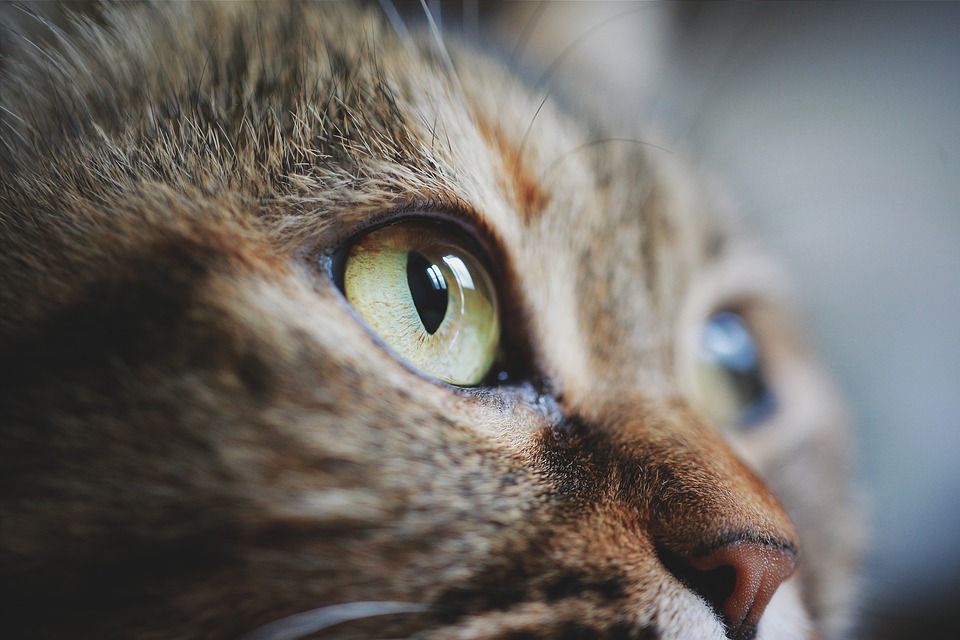The Science Behind Tail Wagging: Exploring its Role in Hunting Play
Introduction:
Cats are mysterious creatures, often leaving us puzzled by their behaviors. One of the most intriguing behaviors exhibited by cats is tail wagging. While tail wagging is commonly associated with dogs, cats also wag their tails, albeit for different reasons. In this article, we will delve into the science behind tail wagging in cats, particularly focusing on its role in hunting play. Read on to discover the fascinating truth behind this captivating behavior.
I. Understanding Tail Wagging in Cats:
Tail wagging in cats: Debunking the misconception
Contrary to popular belief, tail wagging in cats is not always a sign of aggression. Cats have a unique way of communicating through their tails, and tail wagging can convey various messages depending on the context and intensity of the wag.
The different types of tail wagging and their meanings
There are different types of tail wagging in cats, each with its own meaning. A slow, gentle wag usually indicates friendliness, curiosity, or contentment. A rapid, forceful wag, on the other hand, can be a sign of aggression, irritation, or arousal. Understanding these different types of tail wagging can help cat owners interpret their feline companions’ emotions and intentions.
The role of tail wagging in feline communication
Tail wagging is an important aspect of feline communication. Cats use their tails to express their emotions and intentions to other cats, animals, and even humans. By observing the position, movement, and intensity of a cat’s tail wag, we can gain insights into their current state of mind and potentially avoid miscommunications or conflicts.
II. Tail Wagging in Hunting Play:
The connection between hunting instincts and tail wagging
Cats are natural hunters, and their tail wagging behavior is closely linked to their hunting instincts. When a cat is engaged in hunting play, their tail may wag in a manner that mimics the movements of prey. This wagging helps them maintain focus, balance, and coordination while stalking or pouncing on a target.
How tail wagging mimics prey behavior
Tail wagging in hunting play serves a purpose beyond mimicking prey behavior. The movement of the tail can also act as a visual distraction, diverting the attention of potential prey or confusing them. By wagging their tails, cats enhance their chances of successfully capturing their targets.
Tail wagging as a form of predatory play
Tail wagging in hunting play is not only beneficial for cats’ hunting success but also serves as a form of predatory play. Engaging in hunting play allows cats to exercise their hunting skills, release pent-up energy, and satisfy their natural instincts. Tail wagging during playtime adds an extra element of excitement and realism to the experience.
III. The Science Behind Tail Wagging:
The involvement of hormones in tail wagging behavior
Hormones play a significant role in tail wagging behavior in cats. Hormones such as dopamine and oxytocin are released during hunting play, contributing to the positive emotions and pleasure associated with the behavior. These hormones reinforce the cat’s motivation to engage in tail wagging and hunting play.
Neurological factors influencing tail wagging
The neurological wiring of a cat’s brain also influences tail wagging behavior. Certain areas of the brain, such as the amygdala and the cerebellum, are involved in coordinating and controlling tail movements. Understanding these neurological factors helps us appreciate the complexity and precision with which cats wag their tails.
The impact of socialization on tail wagging
Early socialization experiences can have an impact on a cat’s tail wagging behavior. Cats that have positive socialization experiences during their early development stages are more likely to exhibit confident, relaxed tail wagging. On the other hand, cats with limited socialization may display fearful or defensive tail wagging behaviors.
IV. FAQs about Tail Wagging in Cats:
1. Why do cats wag their tails?
Cats wag their tails for various reasons, including communication, expressing emotions, and engaging in hunting play. Tail wagging is a complex behavior that serves multiple purposes.
2. Is tail wagging always a sign of aggression in cats?
No, tail wagging in cats is not always a sign of aggression. While aggressive wagging tends to be rapid and aggressive, cats also wag their tails when excited, curious, or engaged in play.
3. How can I differentiate between a friendly tail wag and an aggressive one?
Pay attention to the speed and intensity of the tail wag. A slow, gentle wag usually indicates friendliness or curiosity, while a rapid and forceful wag can signal aggression or irritation.
4. Can tail wagging be trained out of cats?
Tail wagging is a natural behavior in cats and cannot be entirely trained out of them. However, you can redirect their focus or discourage aggressive tail wagging through positive reinforcement training techniques.
5. Are there any health issues associated with excessive tail wagging?
Excessive tail wagging in cats can be a sign of stress, anxiety, or an underlying medical condition. If your cat exhibits persistent and abnormal tail wagging, it is advisable to consult a veterinarian for a thorough examination.
Conclusion:
Tail wagging in cats serves as a crucial aspect of feline communication and predatory play. Understanding the science behind this behavior helps us comprehend our feline companions better. Next time you observe your cat wagging its tail, remember that it might be engaging in hunting play or conveying a message. Embrace the enigma of cats, and enjoy decoding their fascinating behaviors.








